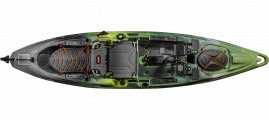For centuries, inventive minds have experimented with leg-powered propulsion systems for small boats. Archeological evidence traces the development of the pedal drive watercraft back to the ancient Chinese, but the idea didn’t really catch on until the early days of modern kayak fishing.
Engineers and designers looking for a way to move a heavy sit-on-top kayak with the least effort and the most comfort developed light, compact and powerful pedal drives to get more people on the water. Once anglers discovered these efficient, hands-free fishing boats, the rest was history.
Top picks: Best pedal drive fishing kayaks for 2024
The following pedal fishing kayaks have received the highest star ratings by reviewers in our Paddling Buyer’s Guide. See and review all pedal fishing kayaks here.
Best Fishing Kayaks With Pedals
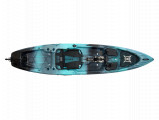
Pescador Pilot 12.0
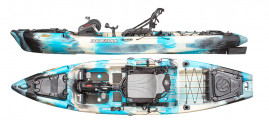
Coosa FD
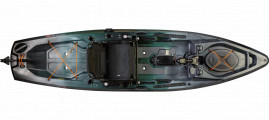
Topwater 120 PDL
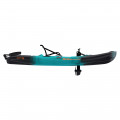
Sportsman Salty PDL 120

Mirage Outback
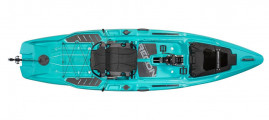
Recon 120 HD Fishing Kayak
Shop for pedal drive fishing kayaks
Follow the links below into the Paddling Buyer’s Guide where you’ll find every pedal-powered sit-on-top fishing kayak available along with specs, prices, reviews and places to buy.
Shop by type
Solo fishing kayaks with pedals
Sit-on-top fishing kayaks with pedals
Inflatable fishing kayaks with pedals
Rigid pedal fishing kayaks
Fishing kayaks with pedals and motor
Ocean fishing kayaks with foot pedals
Pedal fishing kayaks under $1,000
Lightweight pedal fishing kayaks
Shop by brand
Feelfree pedal fishing kayaks
Hobie fishing kayaks with pedals
Jackson pedal drive fishing kayaks
Native Watercraft pedal fishing kayaks
NuCanoe pedal fishing kayaks
Ocean Kayak pedal fishing kayaks
Old Town pedal fishing kayaks
Pelican fishing kayaks with pedals
Perception pedal fishing kayaks
Point 65 pedal fishing kayaks
Santa Cruz pedal fishing kayaks
Vibe pedal fishing kayaks
Wilderness Systems pedal fishing kayaks
Best pedal fishing kayaks
Want to know more about a specific type or brand of pedal fishing kayak? Below you’ll find our articles about different types of pedal-powered fishing kayaks—each goes over the buying advice you’ll need to know to make a purchase and provides a rundown of the top models.
Shopping for a used pedal fishing kayak?
Before buying a used pedal kayak, be sure to carefully check the boat and pedal system. In addition to searching the hull for wear and tear, pay extra attention to the area around the pedal drive and scuppers for cracks and separation. Pedal systems apply a lot of pressure to the plastic and installing and removing the drive can wear the plastic thin.
Then, it’s time to inspect the drive. Pedal drives are tough, but anglers are tougher. All makes and models of pedal drives are subject to breakdown. Despite regular maintenance, cleaning, greasing and replacing prop pins, mechanical components suffer damage and wear. With the pedal system removed, check the housing, chains, gears, pins and latches. Then make sure the base fits into the pedal well tightly and all parts work smoothly and correctly.
For more tips on what to look for when selecting a used fishing kayak, read our article How To Buy A Used Fishing Kayak.
Pedal power fishing kayak buying guide
Pedal systems make it possible to go farther and faster with less energy. The propeller or fins hanging below the water also make the kayak more stable.
Pedal drives fall into two categories: fin drives and propeller drives. Fin drives, like Hobie’s MirageDrive, use pedals moving fore and aft to push and pull flexible fins below the boat. Prop drives, such as Old Town PDL and Native Propel, use a circular pedal stroke to spin a propeller. Both systems offer hands-free fishing, greater speed and range and improved stability.
The biggest advantage to a prop drive is instantly going into reverse by turning the pedals backwards. This makes it quicker to control the kayak while fishing and fighting a fish.
Not to say fin drives can’t go into reverse. Hobie’s MirageDrive 180 fins are shifted into reverse by pulling a cable on the drive. The MirageDrive 360 fins turn 360 degrees when the operator spins a dial. These systems improve maneuverability, but they require a few more seconds and a couple more steps to change direction compared to a propeller drive.
Another difference is a fin drive has to be removed from the boat before launching and returning to land. A prop drive is installed in the kayak and then lowered on the water. This makes it slightly quicker to take a prop drive from land to sea.
Fin drives, on the other hand, are easier to switch into shallow-water mode by simply flattening the fins against the hull. A prop drive must be pulled out of the water before it hits bottom.
Whether you choose prop or fins, test how long it takes to install and remove the pedals. You’ll have to perform this task every time you launch and land the kayak. The connection between the pedal unit and the hull should be sturdy and tight because any flex will sap pedaling power.
Fin drives tend to be lighter than prop drives. However, a fin drive’s exposed parts are subject to dirt and damage while most prop drives have sealed mechanisms.
Some anglers prefer the fin drive’s forward and back leg motion while other people are more comfortable spinning pedals. It’s best to try each system before settling on a pedal drive.
Pedal systems suffer a lot of abuse propelling the kayak through shallow water, vegetation and hard structure. Reliability has improved but pedal units occasionally break down and parts wear out. The pedal system requires regular maintenance like cleaning, lubrication and replacing parts such as propeller pins and pedals. Each manufacturer has a schedule and guidelines for pedal system care.
In addition to choosing a reliable pedal system, look for a rudder with a sturdy connection to the boat. Rudder cables should be robust with strong connection to the rudder and the control knob. The control knob should also be tough and easy to turn with the least play between the dial and base.
Once you’ve chosen a drive system, choose a kayak design that meets your needs. Pedal drives come on small and light pocket rockets and big, heavy, full-feature plastic yachts. The advice for choosing the best pedal kayak hull aligns with advice for choosing a sit-on-top kayak.
A great pedal kayak is tough, easy to operate and stable. New anglers who are nervous about paddling or falling overboard feel more confident in a stable and efficient pedal kayak. Experienced anglers looking to take their kayak farther and take their fishing to a higher level appreciate the extended range and speed of a pedal kayak.
-
Fishing kayak pedal vs paddle
Should you buy a paddle kayak or a pedal boat? The choice breaks down like this: pedal kayaks are easier to operate and more stable. On a paddle kayak, the absence of a pedal system and an optional rudder make it lighter with fewer parts.
To use a pedal kayak, sit in the seat, drop the drive, engage the rudder and pedal away. The pedals take care of propulsion and the rudder controls direction. You can fish while pedaling and leg power is stronger than arm power.
For paddling, there is a slight learning curve to using a paddle to propel and control the kayak. With some general instructions and a few miles on the water, paddling becomes easier. Many anglers appreciate the simplicity of a paddle kayak, just grab the boat, the paddle, your PFD and go.
A paddle kayak will make circles around a pedal boat. The double-bladed kayak paddle makes it possible to perform sharp turns, spin in place or go backwards and sideways in an instant. On most pedal kayaks, you’ll need a paddle to perform these maneuvers.
Where you plan to fish plays into the equation, too. For rocky rivers or sneaking around extremely shallow water, a paddle kayak happily bounces over rocks and only requires a couple inches of water to float. To cover long distances and carry a ton of gear, a pedal kayak is more efficient and powerful.
-
Where to buy a pedal fishing kayak
For the best pedal fishing kayaks, check out the retailers in the Paddling Buyer’s Guide. Or, visit your local paddle shop for a test drive.
-
Pedal fishing kayak price
The biggest disadvantage to a pedal kayak is price. Pedal kayaks cost up to $1,000 more than a similar paddle kayak.
Fishing pedal kayak reviews
There’s no better way to choose a pedal kayak than by kicking the tires and taking a test drive. The staff at Kayak Angler, our sister magazine, have run the best pedal fishing kayaks through the gauntlet. We’ve rigged the boats for fishing, loaded them with gear and hit the water.
Our testing includes miles of pedaling and hours of fishing in a variety of conditions and locations. This allows us to evaluate how the boat handles and how it performs for the intended angler and conditions. If you can’t get to the paddle shop or a demo day, take a test drive with our review of the best pedal-power fishing kayaks.
- Fishing Kayak Review: SeaStream Angler 120 PD
- Fishing Kayak Review: NuCanoe Unlimited
- Hybrid SUP Kayak Review: Hobie Mirage Lynx
- Fishing Kayak Review: Wilderness Systems Recon 120 HD
- Hybrid Fishing SUP Review: Vibe Cubera 120
- Fishing Kayak Review: Vibe Shearwater 125
- Inflatable Pedal Kayak Review: BOTE LONO Aero Apex
- Old Town’s Topwater 120 PDL Pedal Kayak Review



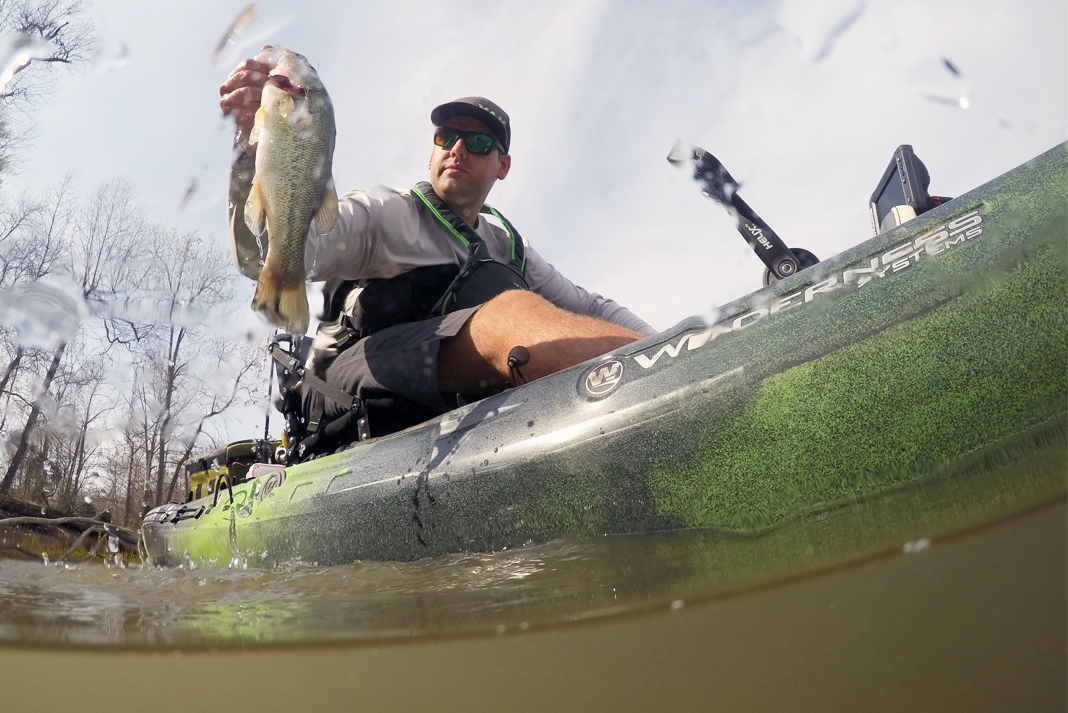


-first_product_boats.jpg)
